Other Shibari Rope Materials
Despite hemp being the prefered material for Shibari ropes amongst professionals, there is no “right” material and it really depends on your personal preferences. We will go over the pros and cons of the most popular rope materials used in Shibari besides hemp as well as the best practices to clean and maintain them so you can make up your own mind about what is best for you.
Index
– Jute
– Cotton
– Nylon
– Posh
– Climbing rope
Hemp rope continues to be the preferred choice amongst Shibari practitioners worldwide. Check out our guide to hemp to learn why.
Jute
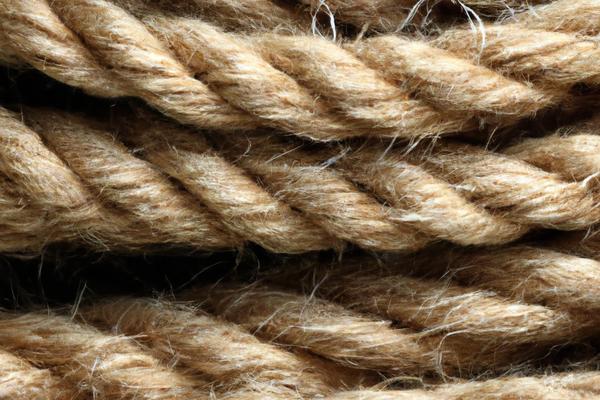
Pros
1. Cost-effectiveness: Jute rope offers a notable advantage in terms of affordability compared to hemp. For practitioners looking for a budget-friendly option jute rope provides an accessible alternative.
2. Lighter than hemp: Because jute is lighter than hemp, it is easier to carry around.
3. Natural aesthetic appeal: Jute rope carries a distinct, earthy aesthetic that is often sought after in Shibari. Its natural fibers and rustic appearance can enhance the visual appeal of Shibari ties, contributing to a more authentic and organic artistic expression.
4. Easy to handle and grip: Jute rope’s texture provides a good grip, making it easy to handle during intricate knotwork.
Cons
1. Rough on the skin: Jute can have a rougher texture compared to hemp. This may cause some individuals to experience discomfort or irritation during Shibari sessions.
2. Less durable than hemp: While jute rope is suitable for many Shibari applications, it is generally considered to be less durable than hemp. Jute fibers may exhibit a higher propensity for wear and fraying over time, especially with frequent and intense use.
3. Weaker than hemp: In terms of tensile strength, jute is comparatively weaker than hemp. This means that jute ropes may be more prone to breakage or stretching under tension, potentially impacting the overall reliability and stability of Shibari ties.
Cleaning your jute ropes
Washing
1. Fill a large bucket with cold water and add clear detergent to it.
2. Place the loose ropes inside the bucket and stir.
3. Let the ropes sit in the bucket around 20 – 30 minutes.
4. Rinse the ropes with cold water until all the detergent is removed.
Drying
1. Hang the rope on a clothes line until it stops dripping
2. Using twine, attach one end of the rope to a solid mount such as a post (if you tie the wet rope around the mount directly instead of using twine, it will dry with the twist and you won’t be able to get rid of it).
3. Using twine, attach the other end of the rope to another solid mount, applying as much tension as you can. If the rope is long enough wrap it across both solid mounts.
4. Leave under tension until dry. Do not reapply tension.
Cotton
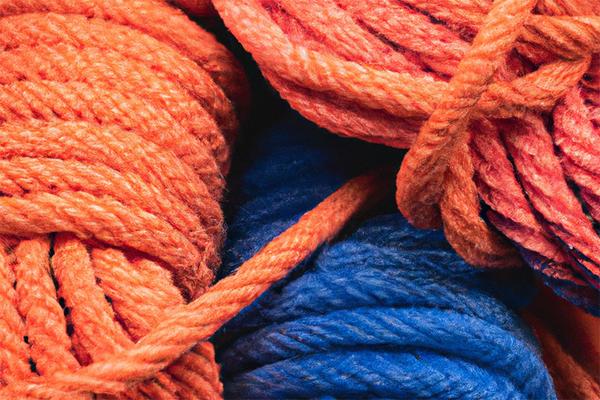
Pros
1. Budget friendly: One of the great advantages of cotton rope is its affordability. Investing in a complete rope bondage kit can be quite expensive (though it doesn’t have to be! Check out our DIY Shibari hemp rope kit), whereas cotton provides a more budget-friendly option for beginners.
2. Very soft: Cotton rope offers a softer texture compared to hemp, making it comfortable to wear during Shibari sessions.
3. Beginner-friendly resilience: Cotton is more forgiving to beginners than hemp because it requires great speed and/or pressure to cause rope burn, providing an added layer of safety for those who are new to the art of Shibari.
4. Increased softness with washing: Another benefit of cotton rope is its ability to become even softer when washed.
5. Versatile color options: Cotton is highly receptive to dyes, allowing for easy customization.
6. Lightweight and portable: Cotton rope is known for its lightness, making it convenient to carry ample lengths of rope with ease. This characteristic proves advantageous for those who prefer or require a greater amount of rope during their Shibari practice.
Cons
While cotton’s benefits make it seem like the answer to all our prayers, the defficiencies of the material make it clear why hemp, despite its price, is actually a better choice.
1. It is highly elastic: Picture tying a knot with a cotton rope. The more tension you put on the rope, the tighter the knot will become until it can become virtually impossible to untie. The elasticity of the material can become problematic when trying to control the tightness of the knot and it can become very frustrating to untie. If you are choosing cotton for your ropes, make sure you always have some safety shears close by in case you find yourself faced with an knot that cannot be undone.
2. When the ropes get dry they get coarse: Unlike hemp, cotton cannot absorb lubricating oil so when they get dry with age, there is not much you can do to fix the texture.
3. Suceptibility to dirt and fuzziness: It’s important to note that cotton rope can accumulate dirt and fuzz more easily. Regular cleaning and maintenance are recommended to preserve its cleanliness and ensure its longevity.
Cleaning your cotton ropes
Washing
Using a washing machine
1. Place your ropes inside a pillow case or a laundry bag.
3. Put the ropes in your washing maching on a delicate cycle with cold water. Use a clear detergent.
4. Use an extra spin cycle to remove excess water from the ropes.
Drying
1. Hang the rope on a clothes line until it stops dripping
2. Attach the rope to a solid mount such as a post
3. Apply tension to the rope by pulling it for about 30 seconds
4. Release the tension and let hang until almost completely dry
5. Repeat steps 3 and 4
6. Let dry completely before storing
Not convinced about jute or cotton? You’re not alone. Check out our case for Shibari hemp ropes
Nylon
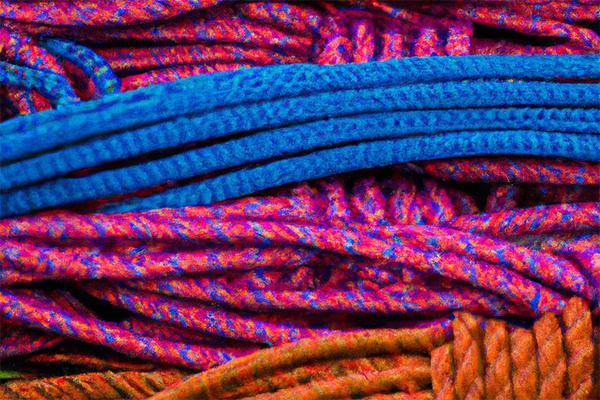
1. Strong and durable: This strength ensures that the rope maintains its integrity over time, even with repeated use.
2. Comes in many colors: Nylon ropes come in a variety of vibrant colors, offering ample options for personalization and creative expression in Shibari.
3. Very soft to the touch: Nylon ropes have a notably soft and smooth texture, making them pleasing to the touch. This characteristic enhances wearer comfort during Shibari sessions, allowing for a more enjoyable and sensual experience.
4. Easy to clean: Nylon is relatively easy to clean, requiring minimal effort to maintain hygiene. It can be washed and dried with you washer/dryer at home.
5. No maintenance required: Unlike natural fiber ropes that may need conditioning or treatment, nylon ropes do not require any specific care routine, saving time and effort for practitioners.
6. Budget-friendly: Nylon ropes are often more affordable compared to natural fiber alternatives, such as hemp or jute.
Cons
1. Slippery nature: Nylon ropes have a tendency to be slippery, which can present a challenge in maintaining secure knots during Shibari ties. They often require different techniques to secure ties, making nylon an unfriendly material for beginners.
2. Can cause rope burn: Due to its synthetic nature, nylon ropes may generate more friction and heat compared to natural fibers. This increased friction can result in rope burn if not properly managed.
3. Less authentic aesthetic: Nylon ropes, being synthetic, may lack the organic and traditional aesthetic appeal that some Shibari enthusiasts seek.
4. Limited breathability: Nylon, as a synthetic material, has lower breathability compared to natural fibers. Prolonged use of nylon ropes during Shibari sessions may lead to increased perspiration and reduced airflow against the skin.
Cleaning your nylon ropes
Washing
Using a washing machine
1. Place your ropes inside a pillow case or a laundry bag.
3. Put the ropes in your washing maching on a delicate cycle with cold water. Use a clear detergent.
4. Use an extra spin cycle to remove excess water from the ropes.
Drying
1. Without taking the ropes from the laundry bag, place them in your dryer.
2. Tumble dry. Do not use any heat or risk melting your ropes!
Posh
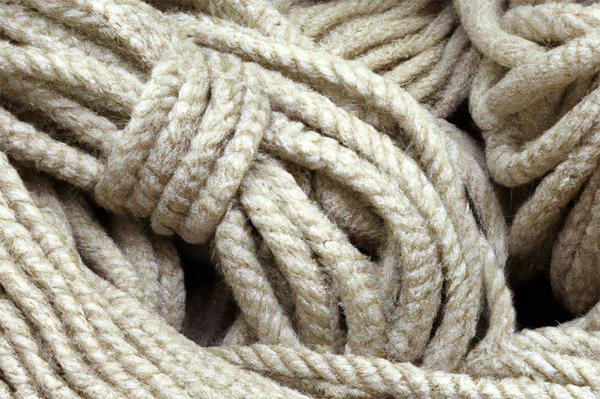
Pros
1. Looks like natural fiber: Posh is made up of spun polyester, however, it blends perfectly with natural fibers, providing a natural aesthetic with the benefits of synthetic rope.
2. Can withstand a lot of tension: Posh ropes, crafted from spun polyester, exhibit impressive tensile strength, enabling them to endure significant amounts of tension without compromising their structural integrity.
3. Hypoallergenic: Posh ropes made of spun polyester are an excellent choice for individuals with sensitive skin, minimizing the risk of allergic reactions and allowing for comfortable and enjoyable Shibari experiences.
4. Easy to clean: You can use your washer and drier to clean and dry these ropes.
5. Budget-friendly: Posh rope is definitely cheaper than natural fibers and provides a beautiful and functional alternative.
Cons
1. Detailed knots can be difficult to make: The synthetic nature of posh ropes can result in a firmer and less pliable texture, which can affect the overall flexibility and maneuverability during Shibari ties. This stiffness may make it slightly more challenging to achieve certain knot configurations or to create fluid movements and transitions in the rope work.
2. Synthetic feel: Despite being visibly similar to natural fibers, posh rope does not feel natural.
Cleaning your posh ropes
Washing
Using a washing machine
1. Place your ropes inside a pillow case or a laundry bag.
3. Put the ropes in your washing maching on a delicate cycle with cold water. Use a clear detergent.
4. Use an extra spin cycle to remove excess water from the ropes.
Drying
1. Without taking the ropes from the laundry bag, place them in your dryer.
2. Tumble dry. Do not use any heat or risk melting your ropes!
A complete Shibari hemp rope kit can get a bit pricey, but it doesn’t have to be. You can pre-treat your hemp ropes and we teach you how!
Climbing rope
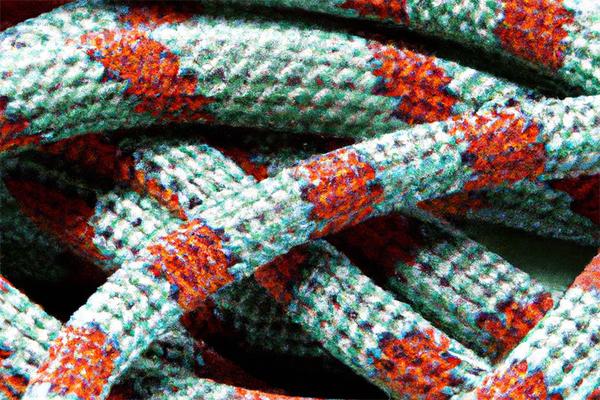
Pros
1. High tensile strength: Climbing ropes are designed to withstand significant tension and weight, making them capable of handling the demands of Shibari ties.
2. Availability of different diameters and lengths: Climbing ropes come in various diameters and lengths, offering a wide range of options for customization.
Cons
1. Lack of flexibility: Climbing ropes are typically less flexible compared to ropes specifically designed for Shibari. This reduced flexibility can make it more challenging to achieve certain knots and tie intricate patterns.
2. Potential for rope burn: Climbing ropes, especially those with a rougher texture, may have a higher risk of causing rope burn when in direct contact with the skin.
3. Rough texture on the skin: Some climbing ropes have a rougher texture, which can feel abrasive against the skin during Shibari ties. This roughness may lead to discomfort or irritation, particularly when the rope is in direct contact with sensitive areas.
4. Less aesthetic appeal: Climbing ropes may lack the aesthetic appeal and visual authenticity often associated with traditional Shibari rope materials.
5. Potential difficulty in knot untying: Due to their construction and specialized features, climbing ropes can have a higher propensity for creating tight knots that are challenging to untie. This can be frustrating and time-consuming.
Cleaning your climbing ropes
Washing
Using a bucket
1. Fill a large bucket with cold water and add clear detergent to it.
2. Place the loose ropes inside the bucket and stir.
3. Let the ropes sit in the bucket around 20 – 30 minutes.
4. Rinse the ropes with cold water until all the detergent is removed.
Drying
1. Place your rope over a towel
2. Let dry completely. Do not place in direct sunlight.